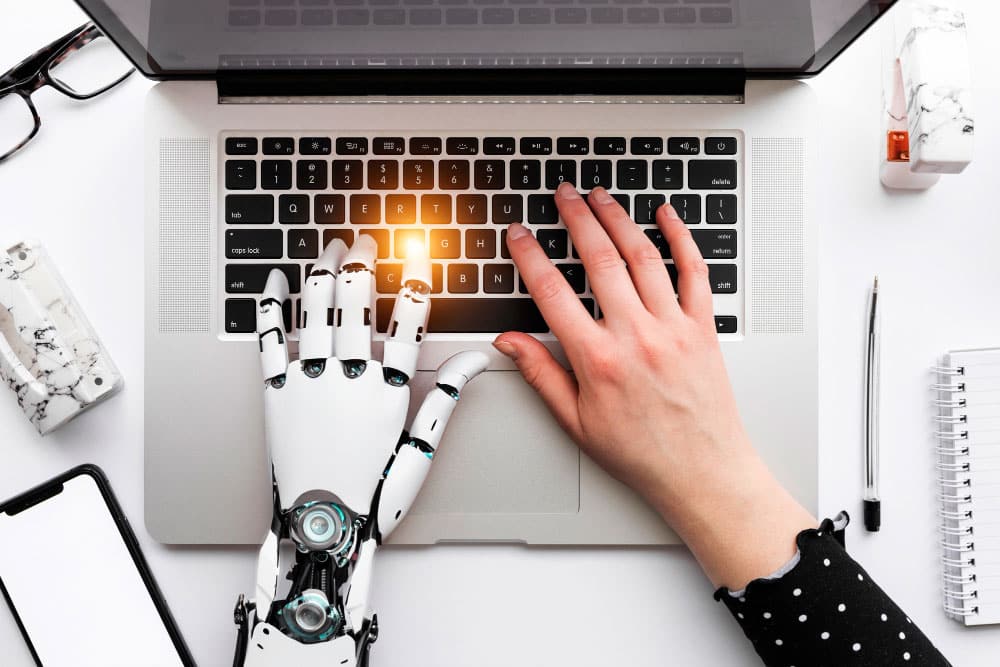Artificial intelligence (AI) has transformed countless fields and areas of work, and professional translation is no exception. In particular, generative AI (GenAI) is offering more accurate and efficient solutions than ever before when it comes to machine translation. Through significant advances in machine learning, natural language processing (NLP) and neural networks, AI algorithms have reached levels of understanding and reproducing human language that challenge the limits of technology.
The rise of machine translation
Machine translation has undergone several stages of development, from simple grammar rules to statistical systems and, more recently, deep neural networks. GenAI is at the forefront of these developments..
Deep learning algorithms have greatly enhanced the improvement in machine translation tools, as they learn from their mistakes and adjust their language models to provide more accurate translations. Advances in natural language processing have also made real-time translation feasible, facilitating instant communication by breaking down language barriers through messaging apps and other platforms.
These language models are constantly trained with vast amounts of data, allowing them to learn and understand complex language patterns. As a result, they can produce translations that are more fluent and coherent, coming ever closer to the quality of human translations.
Advantages of AI in translation
- Speed and efficiency: one of the most notable benefits of AI in translation is speed. Machine translation tools can process large volumes of text in a matter of seconds, which would be impossible for a human translator to do in the same amount of time.
- Cost reduction: machine translation significantly reduces the costs associated with manual translation. This makes translation services more accessible to small businesses and individual projects that cannot afford to hire professional translators. However, there remains the risk that machine translation may not be entirely accurate and correct.
- Availability and accessibility: AI tools are available 24/7, allowing users to access translation services anytime, anywhere. This is especially useful for global companies operating across multiple time zones.
Drawbacks and limitations of AI
One of the most well-known problems of AI in professional translation is the accuracy and appropriateness to context. Although AI models have improved greatly, they can still make mistakes when faced with ambiguous phrases, humor, sarcasm, or cultural references that require deeper understanding and greater knowledge of the sociocultural context.
Common errors in machine translations can lead to misunderstandings and sometimes have serious consequences, especially in fields such as medicine or law, where accuracy is crucial. Not to mention the much more visible mistakes in the marketing and advertising sector, as algorithms remain unable to successfully interpret double meanings or wordplay in a slogan.
Over-relying on AI, depending exclusively on technology and without proper human oversight can be very risky. AI tools may not be up to date with the latest developments in language or the specific historical or political contexts of certain texts, which presents a major drawback as it may introduce biases that only a human review can detect to ensure the accuracy and cultural and linguistic appropriateness of translations.
The importance of human translation in the age of AI
Despite advances in translation technology, the role of the human translator remains indispensable, since the quality of machine translation is still unable to match that of human translations. Literary, technical, legal and medical texts require in-depth knowledge that goes beyond the current capabilities of AI, meaning human translators still play a key role. Human creativity and ingenuity are essential to translating poetry, wordplay, and other elements that require a more subtle and nuanced interpretation.
Post-editing, where human translators review and correct AI-generated translations, is a common practice that combines the speed of AI with the accuracy and cultural sensitivity of humans. Human supervision is therefore essential to achieve the highest quality in machine translation processes.
It is worth noting that one of the best forms of human-machine collaboration is the human-in-the-loop (HITL) model human-in-the-loop (HITL) model. Human-machine collaboration is becoming an indispensable factor of the translation industry. Tools such as translation memory systems (TMS) are being integrated with AI technologies to deliver more efficient and accurate workflows. These systems allow human translators to work faster and more efficiently, using AI-generated suggestions as a basis for their own translations.
Will AI and machines replace humans?
AI research continues to explore ways of improving the accuracy, contextual understanding and adaptability of translation models. As AI tools handle more data, it is important to ensure that it is handled securely and ethically, protecting users’ privacy and rights and avoiding biases that can arise in machine learning models.
In conclusion, artificial intelligence has transformed the translation industry, offering significant benefits in terms of speed, efficiency and accessibility. However, it also presents challenges that require the intervention and supervision of human translators to ensure the accuracy and cultural appropriateness of translations.
The balance between technology and human talent is crucial to making the most of the opportunities offered by AI. Human translators will remain an essential part of the process, bringing their creativity, ingenuity and deep understanding of language and culture. Together, AI and human translators can work in a complementary way to deliver high-quality translations that meet the demands of today's globalized world.
We hope you have found this information useful. If you want to find out how to take advantage of the potential of AI in your translations, you can contact us or visit our blog for more information.



